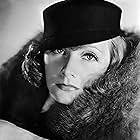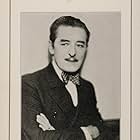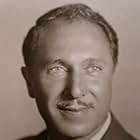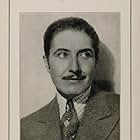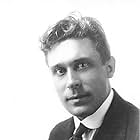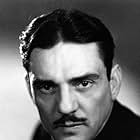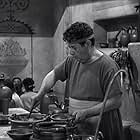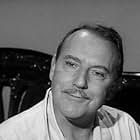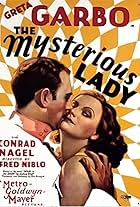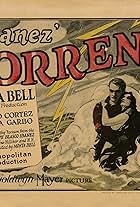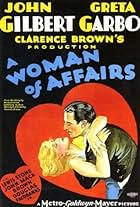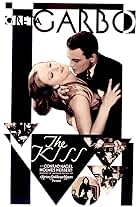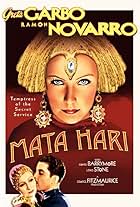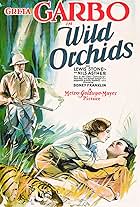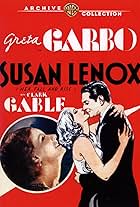IMDb RATING
6.9/10
1.4K
YOUR RATING
An architect tries suppressing his passion for a seductive woman.An architect tries suppressing his passion for a seductive woman.An architect tries suppressing his passion for a seductive woman.
- Awards
- 3 wins
Marc McDermott
- M.Fontenoy
- (as Marc MacDermott)
Robert Anderson
- Pirovani
- (as Robert Andersen)
Sam Appel
- Rebellious Argentine Workman
- (uncredited)
Helen Brent
- Undetermined Secondary Role
- (uncredited)
Steve Clemente
- Salvadore
- (uncredited)
Roy Coulson
- Trinidad
- (uncredited)
Louise Emmons
- Newspaper Vendor
- (uncredited)
Inez Gomez
- Sebastiana
- (uncredited)
Gale Gordon
- Dinner party guest
- (uncredited)
Bob Kortman
- Duras Henchman
- (uncredited)
- Directors
- Writers
- All cast & crew
- Production, box office & more at IMDbPro
Storyline
Did you know
- TriviaFootage of the dam being built is from the construction of the St. Francis Dam in Los Angeles County. The dam was completed in May 1926; it failed March 12, 1928, killing over 430 people.
- GoofsEarly in the whip fight, Manuel Robledo takes at least two direct "strikes" across his face; however, his face remains unmarked until later in the fight.
- Alternate versionsIn 2005, Turner Entertainment Co. copyrighted a version with a new musical score composed by Michael Picton. It was first broadcast on Turner Classic Movies (TCM) on 30 January 2005; it runs 106 minutes.
- ConnectionsFeatured in Hollywood (1980)
Featured review
"The Temptress has now been shown here—terrible. The story, Garbo, everything is extremely bad. It is no exaggeration to say that I was dreadful. I was tired, I couldn't sleep and everything went wrong..." (Greta Garbo)
The roaring twenties...not a very enthusiastic quotation, particularly when we consider the fact its author is Garbo herself, the Garbo people flock to see as a vamp, as a femme fatale who wins and ruins men, as a beauty on the screen, an object of dreams and desires. And so has the driving force been for all these years - I doubt whether THE TEMPTRESS would be watched by anyone nowadays ... if it were not for GARBO.
However, she detested it and no wonder why...For most people who know Garbo's psyche a bit, her melancholy her moments of peace, moments of being 'let alone' and, moreover, what a period it was (the mid 1920s) in her career are close to understand how she must have felt: director Mauritz Stiller, her tutor and a person who taught her skills, who directed her in Swedish GOSTA BERLING SAGA (1923) and brought her to America, is fired just a few days after the production begins; she still does not understand/speak English so well and intuitively learns whom to consider 'familiar soul' among many 'foreigners' in the glossy and tremendous studio that MGM was at the time. What is more, her sister Alva dies in the faraway Sweden. And no wonder she writes the aforementioned bitter words to her friend in Stockholm Lars Saxon. But, the test of time shows something more optimistic and within the variety of opinions and MGM targets of the 1920s, THE TEMPTRESS is overall not that bad as a movie... The CONTENT...
Marked by spiritual/religious references at the beginning and at the end (from Rabindranath Tagore, the first non-European Nobel laureate to Jesus Christ, the Saviour of the world who died for love and manifests his presence in the people in need), the content is visibly the product of MGM studio system and its methods: goodness vs evil clash that uprights the hearts: love that conquers hatred and reconciliation that overcomes vengeance. As it is quite a common theme for films of the time, I would highlight more the technical aspects of the movie some of which appear to be more convincing and more appropriate in this relation. The TECHNICAL MERITS appear, of course, thanks to the people Garbo liked and worked with.
The direction by Fred Niblo, famous for his silent BEN HUR but also for a later Garbo film, THE MYSTERIOUS LADY, is a subtle work filled with stylish moments and delicate as well as thrilling handling of scenes. Although he replaced Stiller, her "sole tutor and companion," (whose style was quite remarkable but different from what they did and understood in Hollywood), she must have felt pretty comfortable under Niblo's direction as she left him a touching note after the work had finished. The lighting by William Daniels, a crucial name of all Hollywood Garbo films, boasts of truly remarkable moments. The effect is no lesser than in greater films, in particular when filming Garbo's face. Consider the scene at the mirror, for instance...indeed, most of what we see of Garbo and her acclaimed "performance for the camera" we owe to Daniels. He captured that essence of her sensitivity to light and shadow as portrait photographer Sinclair said: "Garbo 'feels' the light." And...production by Irving Thalberg, perhaps he did not play that role as in later cooperation with Garbo, but, undeniably, prompted the energy and unbelievable possibilities from the inside of the Swedish Sphynx. As a result, Garbo's portrayal of intriguing Elena is worth appreciation.
And here arises a tricky but a logical question: So why isn't THE TEMPTRESS considered to be a significant GARBO SILENT FILM?
First, Garbo is the best vamp in FLESH AND THE DEVIL; second, her best leading man is John Gilbert (one of the most famous pairing the screen has ever seen); third, the most 'exotic' and arousing locations are in WILD ORCHIDS; fourth, Garbo's most magical moments are in A WOMAN OF AFFAIRS; fifth, the lighting pearls are in THE MYSTERIOUS LADY (particularly its 'candle sequence'; sixth, THE TEMPTRESS was not viewers' first fascination with Garbo because her Hollywood debut is not THE TEMPTRESS but THE TORRENT. So... this film has been bound for years to negligence (nothing special for many). However, it occurs to be undeserved and unfair...
Antonio Moreno is not bad as her leading man...has his moments at least; some of the supporting cast do fine jobs, including Lionel Barrymore as Canterac who appears, years later, in a specific talkie with Garbo, GRAND HOTEL; some scenes can boast of brilliant camera-work (just to mention the witty and visual banquet at Fontenoy's or the presentation of the Argentine); many moments can boast of thrill, including the Argentine fight between Robledo (Antonio Moreno) and the wicked Manos Duras. Except for many clichés noticeable in the film, which, certainly, lower its value, it is important to consider such atmospheric scenes like the masquerade.
Although detested by the main STAR of the film, by the leading lady who was unique and brilliant at multiple levels, THE TEMPTRESS is not so bad. Garbo alone helps us get rid of some sophisticated expectations from the content. As a matter of fact, more of her films do not boast of particularly clever content...yet, EVERY Garbo film is worth seeing because of her tremendous presence on the screen, the unforgettable magic and something really special which she offered the cinema of her time and the cinema of all periods.
See this silent film AFTER you have seen hyper-sensual FLESH AND THE DEVIL, subtle A WOMAN OF AFFAIRS, refreshing THE SINGLE STANDARD, innovative THE KISS, stunning THE MYSTERIOUS LADY but allow yourself at least a single viewing of its beautifully restored DVD version. You will not be disappointed.
The roaring twenties...not a very enthusiastic quotation, particularly when we consider the fact its author is Garbo herself, the Garbo people flock to see as a vamp, as a femme fatale who wins and ruins men, as a beauty on the screen, an object of dreams and desires. And so has the driving force been for all these years - I doubt whether THE TEMPTRESS would be watched by anyone nowadays ... if it were not for GARBO.
However, she detested it and no wonder why...For most people who know Garbo's psyche a bit, her melancholy her moments of peace, moments of being 'let alone' and, moreover, what a period it was (the mid 1920s) in her career are close to understand how she must have felt: director Mauritz Stiller, her tutor and a person who taught her skills, who directed her in Swedish GOSTA BERLING SAGA (1923) and brought her to America, is fired just a few days after the production begins; she still does not understand/speak English so well and intuitively learns whom to consider 'familiar soul' among many 'foreigners' in the glossy and tremendous studio that MGM was at the time. What is more, her sister Alva dies in the faraway Sweden. And no wonder she writes the aforementioned bitter words to her friend in Stockholm Lars Saxon. But, the test of time shows something more optimistic and within the variety of opinions and MGM targets of the 1920s, THE TEMPTRESS is overall not that bad as a movie... The CONTENT...
Marked by spiritual/religious references at the beginning and at the end (from Rabindranath Tagore, the first non-European Nobel laureate to Jesus Christ, the Saviour of the world who died for love and manifests his presence in the people in need), the content is visibly the product of MGM studio system and its methods: goodness vs evil clash that uprights the hearts: love that conquers hatred and reconciliation that overcomes vengeance. As it is quite a common theme for films of the time, I would highlight more the technical aspects of the movie some of which appear to be more convincing and more appropriate in this relation. The TECHNICAL MERITS appear, of course, thanks to the people Garbo liked and worked with.
The direction by Fred Niblo, famous for his silent BEN HUR but also for a later Garbo film, THE MYSTERIOUS LADY, is a subtle work filled with stylish moments and delicate as well as thrilling handling of scenes. Although he replaced Stiller, her "sole tutor and companion," (whose style was quite remarkable but different from what they did and understood in Hollywood), she must have felt pretty comfortable under Niblo's direction as she left him a touching note after the work had finished. The lighting by William Daniels, a crucial name of all Hollywood Garbo films, boasts of truly remarkable moments. The effect is no lesser than in greater films, in particular when filming Garbo's face. Consider the scene at the mirror, for instance...indeed, most of what we see of Garbo and her acclaimed "performance for the camera" we owe to Daniels. He captured that essence of her sensitivity to light and shadow as portrait photographer Sinclair said: "Garbo 'feels' the light." And...production by Irving Thalberg, perhaps he did not play that role as in later cooperation with Garbo, but, undeniably, prompted the energy and unbelievable possibilities from the inside of the Swedish Sphynx. As a result, Garbo's portrayal of intriguing Elena is worth appreciation.
And here arises a tricky but a logical question: So why isn't THE TEMPTRESS considered to be a significant GARBO SILENT FILM?
First, Garbo is the best vamp in FLESH AND THE DEVIL; second, her best leading man is John Gilbert (one of the most famous pairing the screen has ever seen); third, the most 'exotic' and arousing locations are in WILD ORCHIDS; fourth, Garbo's most magical moments are in A WOMAN OF AFFAIRS; fifth, the lighting pearls are in THE MYSTERIOUS LADY (particularly its 'candle sequence'; sixth, THE TEMPTRESS was not viewers' first fascination with Garbo because her Hollywood debut is not THE TEMPTRESS but THE TORRENT. So... this film has been bound for years to negligence (nothing special for many). However, it occurs to be undeserved and unfair...
Antonio Moreno is not bad as her leading man...has his moments at least; some of the supporting cast do fine jobs, including Lionel Barrymore as Canterac who appears, years later, in a specific talkie with Garbo, GRAND HOTEL; some scenes can boast of brilliant camera-work (just to mention the witty and visual banquet at Fontenoy's or the presentation of the Argentine); many moments can boast of thrill, including the Argentine fight between Robledo (Antonio Moreno) and the wicked Manos Duras. Except for many clichés noticeable in the film, which, certainly, lower its value, it is important to consider such atmospheric scenes like the masquerade.
Although detested by the main STAR of the film, by the leading lady who was unique and brilliant at multiple levels, THE TEMPTRESS is not so bad. Garbo alone helps us get rid of some sophisticated expectations from the content. As a matter of fact, more of her films do not boast of particularly clever content...yet, EVERY Garbo film is worth seeing because of her tremendous presence on the screen, the unforgettable magic and something really special which she offered the cinema of her time and the cinema of all periods.
See this silent film AFTER you have seen hyper-sensual FLESH AND THE DEVIL, subtle A WOMAN OF AFFAIRS, refreshing THE SINGLE STANDARD, innovative THE KISS, stunning THE MYSTERIOUS LADY but allow yourself at least a single viewing of its beautifully restored DVD version. You will not be disappointed.
- marcin_kukuczka
- Sep 17, 2011
- Permalink
- How long is The Temptress?Powered by Alexa
Details
- Release date
- Country of origin
- Languages
- Also known as
- Vicente Blasco Ibañez' the Temptress
- Filming locations
- Saugus, Santa Clarita, California, USA(St. Francis Dam under construction)
- Production companies
- See more company credits at IMDbPro
Box office
- Budget
- $669,000 (estimated)
- Runtime1 hour 2 minutes
- Color
- Sound mix
- Aspect ratio
- 1.33 : 1
Contribute to this page
Suggest an edit or add missing content











